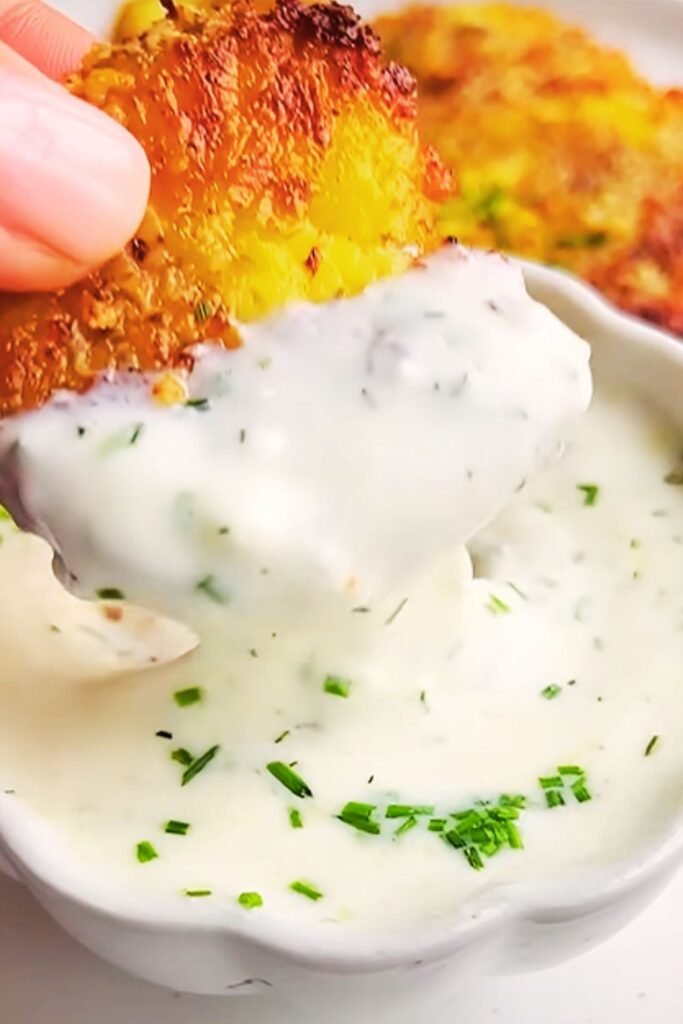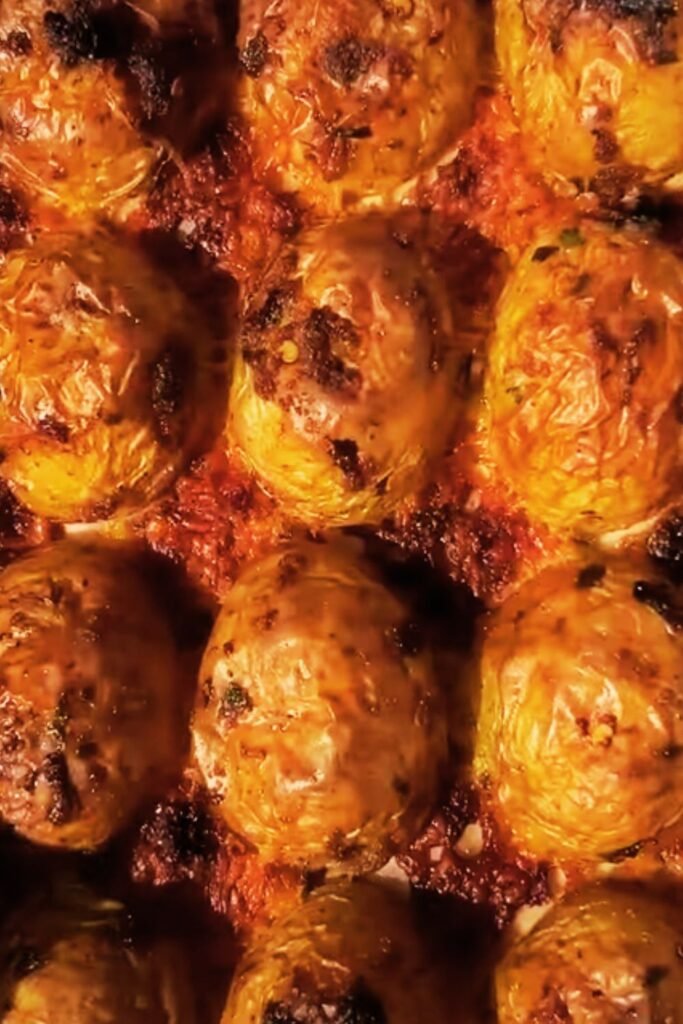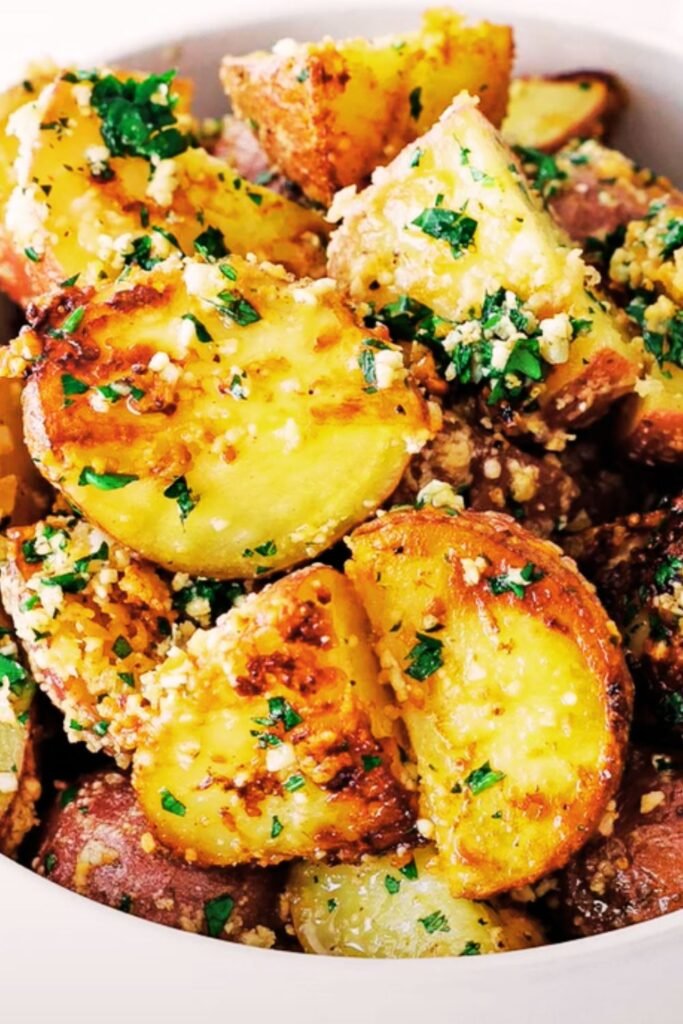There’s something magical about the combination of garlic, parmesan, and perfectly roasted potatoes. I’ve been perfecting this recipe for years, and I can confidently say it’s become my go-to side dish for everything from weeknight dinners to holiday gatherings. The crispy exterior, fluffy interior, and that incredible savory coating make these potatoes absolutely irresistible.
What makes this recipe special isn’t just the flavor—it’s the technique. I’ve learned through countless kitchen experiments that the secret lies in the preparation method, the right potato variety, and timing the cheese addition perfectly. These aren’t just ordinary roasted potatoes; they’re a culinary experience that transforms a simple ingredient into something extraordinary.
Why These Potatoes Are Different
I’ve tried dozens of roasted potato recipes over the years, but this garlic parmesan version stands out for several reasons. First, the parboiling technique I use creates the perfect texture contrast—crispy edges with fluffy centers. Second, the garlic infuses every bite without burning, thanks to my timing method. Finally, the parmesan creates a golden, cheesy crust that’s simply divine.
The beauty of this recipe lies in its versatility. I’ve served these potatoes alongside grilled chicken, roasted beef, and even as a standalone appetizer for parties. They’re sophisticated enough for dinner parties yet simple enough for family meals.
Understanding Potato Varieties
Russet Potatoes : High-starch potatoes that create the fluffiest interior texture. Perfect for achieving that contrast between crispy outside and tender inside.
Yukon Gold Potatoes : Medium-starch potatoes with naturally buttery flavor. They hold their shape well and develop beautiful golden color.
Red Potatoes : Low-starch, waxy potatoes that maintain firm texture. Best for those who prefer less fluffy interiors.
Fingerling Potatoes : Small, elongated potatoes with thin skins. They roast quickly and look elegant on the plate.
For this recipe, I prefer using Yukon Gold potatoes because they strike the perfect balance between texture and flavor. However, I’ve successfully used russets when I want extra fluffiness and red potatoes when I’m serving them as appetizers.
Essential Ingredients Breakdown
| Ingredient | Quantity | Purpose | Substitution Options |
|---|---|---|---|
| Yukon Gold Potatoes | 2 lbs | Main ingredient | Russet, Red, or Fingerling |
| Fresh Garlic | 6 cloves | Aromatic base | Garlic powder (2 tsp) |
| Parmesan Cheese | 1 cup grated | Flavor and crispy coating | Pecorino Romano, Aged Cheddar |
| Olive Oil | 3 tablespoons | Fat for roasting | Avocado oil, Melted butter |
| Fresh Rosemary | 2 sprigs | Herbal note | Thyme, Oregano |
| Salt | 1 teaspoon | Seasoning | Sea salt, Kosher salt |
| Black Pepper | 1/2 teaspoon | Spice | White pepper |
| Paprika | 1/2 teaspoon | Color and mild heat | Smoked paprika |
My Perfected Cooking Method
Preparation Phase
I always start by preheating my oven to 425°F (220°C). This high temperature is crucial for achieving that perfect crispy exterior. While the oven heats, I wash and cut my potatoes into uniform pieces—about 1.5-inch chunks work best. I leave the skin on because it adds texture and nutrition.
The parboiling step is where many people skip ahead, but I never do. I bring a large pot of salted water to boil and add the potato chunks. I cook them for exactly 8 minutes—not more, not less. This partially cooks the potatoes and begins breaking down the exterior, which creates those wonderful crispy edges during roasting.
The Roasting Process
After draining the potatoes thoroughly, I let them sit for 2-3 minutes to allow excess moisture to evaporate. This step is crucial for crispiness. I then toss them with olive oil, making sure every piece is well-coated.
I arrange the potatoes on a large baking sheet in a single layer, ensuring they don’t touch each other. Overcrowding leads to steaming rather than roasting, and I’ve learned this lesson the hard way. If necessary, I use two baking sheets.

The first 25 minutes of roasting happen without any additions. I resist the urge to move them around—letting them develop that golden crust undisturbed is essential. Only after this initial roasting do I add the minced garlic, tossing gently to distribute it evenly.
The Cheese Addition
Here’s where timing becomes critical. I add the grated parmesan during the last 10 minutes of cooking. Adding it too early causes the cheese to burn, while adding it too late doesn’t allow it to properly meld with the potatoes. I’ve found this 10-minute window creates the perfect golden, crispy cheese coating.
Nutritional Benefits and Considerations
| Nutrient | Amount per Serving | Daily Value % |
|---|---|---|
| Calories | 285 | 14% |
| Protein | 8g | 16% |
| Carbohydrates | 42g | 14% |
| Fiber | 4g | 16% |
| Fat | 10g | 15% |
| Calcium | 180mg | 18% |
| Potassium | 620mg | 18% |
| Vitamin C | 28mg | 31% |
These potatoes aren’t just delicious—they’re nutritionally valuable too. Potatoes are excellent sources of potassium, vitamin C, and fiber. The parmesan adds protein and calcium, while the garlic provides antioxidants and immune-boosting compounds.
Flavor Variations I Love
Mediterranean Style
I sometimes add sun-dried tomatoes, kalamata olives, and fresh oregano during the last 15 minutes of cooking. The result is a Mediterranean-inspired dish that pairs beautifully with grilled lamb or chicken.
Herb-Crusted Version
For special occasions, I create an herb crust by mixing the parmesan with fresh chopped parsley, chives, and thyme. This creates a more complex flavor profile and beautiful green specks throughout.
Spicy Kick
When I want heat, I add red pepper flakes with the garlic and finish with a sprinkle of cayenne pepper. The spice level is adjustable, making it perfect for different palates.

Troubleshooting Common Issues
Problem: Soggy Potatoes
Solution: Ensure proper parboiling time and complete drainage. Overcrowding the pan also causes steaming instead of roasting.
Problem: Burnt Garlic
Solution: Add garlic only after the initial 25-minute roasting period. Minced garlic burns quickly at high temperatures.
Problem: Uneven Cooking
Solution: Cut potatoes into uniform sizes and don’t overcrowd the pan. Use two baking sheets if necessary.
Problem: Cheese Not Sticking
Solution: Add cheese during the last 10 minutes and ensure potatoes are slightly moist from roasting before adding cheese.
Storage and Reheating Guidelines
| Storage Method | Duration | Quality Level |
|---|---|---|
| Room Temperature | 2 hours | Best |
| Refrigerator | 3-4 days | Good |
| Freezer | 2-3 months | Fair |
I store leftover potatoes in airtight containers in the refrigerator. For reheating, I prefer using the oven at 400°F for 10-15 minutes rather than the microwave, which makes them soggy. If I’m reheating from frozen, I add an extra 5-10 minutes to the cooking time.
Perfect Pairings and Serving Suggestions
These garlic parmesan roasted potatoes complement virtually any main dish. I’ve found they’re particularly excellent with:
Protein Pairings: Roasted chicken, grilled salmon, beef tenderloin, pork chops, or lamb. The savory, cheesy flavor enhances without overwhelming the main course.
Vegetarian Options: They work wonderfully alongside roasted vegetables, stuffed peppers, or as part of a Mediterranean mezze platter.
Holiday Meals: I often serve these during Thanksgiving and Christmas as an elevated alternative to traditional mashed potatoes. They’re elegant enough for special occasions yet comforting enough for family gatherings.

Advanced Tips for Perfect Results
Temperature Control
I’ve found that maintaining consistent oven temperature is crucial. I use an oven thermometer to ensure accuracy, as many ovens run hot or cold. If my oven runs hot, I reduce the temperature by 25°F and extend the cooking time slightly.
Cheese Selection
While pre-grated parmesan is convenient, I always use freshly grated cheese when possible. The flavor is more intense, and it melts better. I keep a block of good-quality parmesan specifically for cooking.
Garlic Preparation
I mince my garlic finely and evenly. Large chunks can burn while small pieces remain raw. I sometimes use a garlic press for consistency, though hand-mincing gives me better control.
Scaling the Recipe
This recipe easily scales up or down. For larger gatherings, I simply multiply all ingredients proportionally and use multiple baking sheets. For smaller portions, I halve everything while maintaining the same cooking temperatures and timing.
When cooking for a crowd, I prepare multiple batches rather than overcrowding pans. It’s worth the extra effort to maintain quality.
Seasonal Adaptations
Spring: I add fresh asparagus pieces during the last 15 minutes of roasting. Summer: Cherry tomatoes and fresh basil make excellent additions. Fall: A sprinkle of sage and a drizzle of maple syrup create autumn flavors. Winter: Root vegetables like carrots and parsnips can be roasted alongside.
Q&A Section
Q: Can I prepare these potatoes ahead of time? A: Yes, you can parboil and season the potatoes up to 4 hours ahead. Store them covered in the refrigerator, then proceed with roasting when ready to serve.
Q: What’s the best way to get extra crispy potatoes? A: The key is proper parboiling time, thorough draining, and avoiding overcrowding. I also sometimes dust them lightly with cornstarch before roasting for extra crispiness.
Q: Can I use pre-grated parmesan cheese? A: While fresh is preferred, pre-grated works fine. Just add it during the last 8 minutes instead of 10 to prevent burning, as pre-grated cheese tends to brown faster.
Q: How do I know when the potatoes are done? A: They should be golden brown and crispy on the outside, with a fork easily piercing through to fluffy interior. The total cooking time is usually 40-45 minutes.
Q: Can I make these potatoes dairy-free? A: Absolutely! Replace the parmesan with nutritional yeast for a similar savory flavor, or try dairy-free parmesan alternatives available in most grocery stores.
Q: What other herbs work well with this recipe? A: Rosemary, thyme, oregano, and sage all pair beautifully with garlic and parmesan. I often use whatever fresh herbs I have on hand.
Q: Can I use a different type of oil? A: Yes, avocado oil works excellently due to its high smoke point. Melted butter creates richer flavor but may brown more quickly.
Q: How do I prevent the garlic from burning? A: Always add garlic after the initial roasting period, never at the beginning. If your oven runs hot, you can wrap the garlic in foil for the first few minutes after adding it.
Q: Can I freeze these potatoes? A: Yes, though the texture changes slightly. I recommend undercooking them slightly if you plan to freeze, then finishing them in the oven when reheating.
Q: What’s the best potato size for this recipe? A: I cut my potatoes into 1.5-inch chunks. This size ensures even cooking while providing enough surface area for maximum crispiness.
This garlic parmesan roasted potato recipe has become a staple in my kitchen because it consistently delivers restaurant-quality results with simple ingredients. The combination of proper technique, quality ingredients, and careful timing creates a side dish that’s both comforting and sophisticated. Whether you’re cooking for family dinner or entertaining guests, these potatoes will elevate any meal.